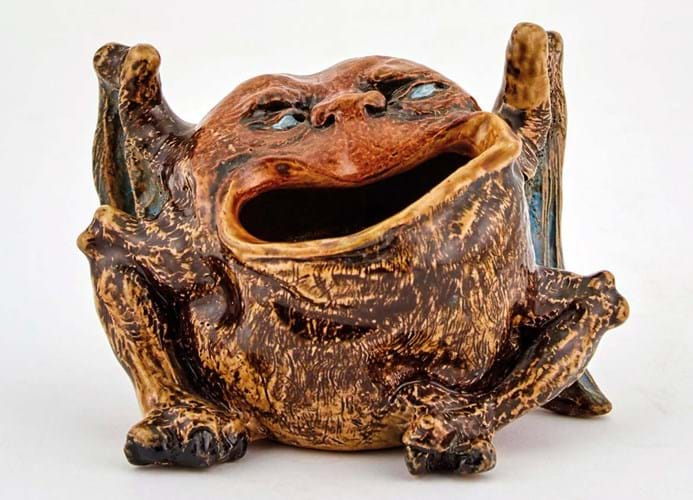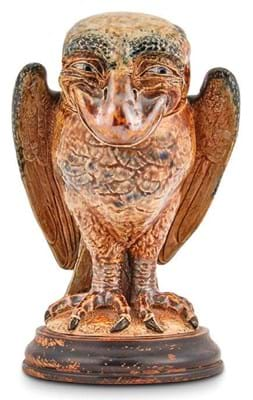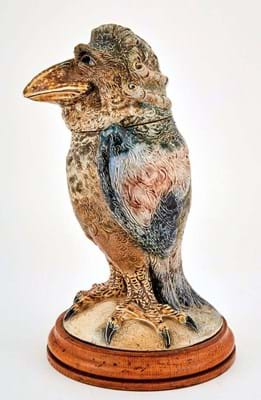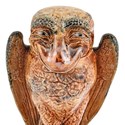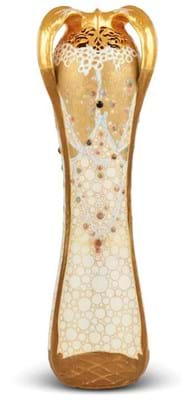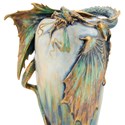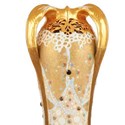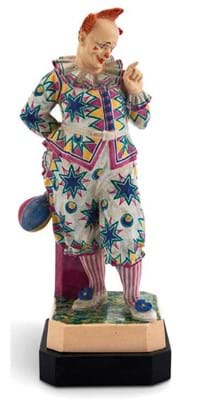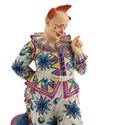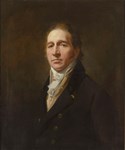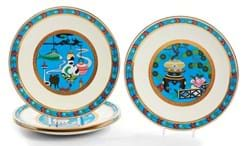Starting with American paintings, they moved on through US, European and Japanese prints to netsuke, sculpture, books, postcards and advertising memorabilia.
More recently, in the 21st century, they turned their attention to ceramics and to 19th century Majolica ware in particular.
This was their last collecting foray, running to over a thousand pieces.
Active members of the Majolica Society, works from their collection featured in the recent Majolica Mania publication, with 26 pieces forming part of the related exhibition that is currently on tour in the UK.
Family collection
As part of its design sale held on December 8, Doyle (26% buyer’s premium) in New York offered the 61-lot Flower Family collection.
With the exception of around half-a-dozen works on paper, notably some by the US artist Joan Semmel, the bulk of the pieces reflected the Flowers’ ceramic interest.
It encompassed late 19th-early 20th century British and Continental European decorative pottery by makers such as Martin Brothers, Charles Vyse, Wedgwood’s Fairyland Lustre, Amphora and Delphin Massier, alongside British, French and American art glass by firms like Thomas Webb, Daum, and Tiffany.
Topping the bill was an example of the Martin Brothers’ celebrated art pottery. It was not one of the famous bird jars that headed the list but one of the characterful grotesques: a 4½in (11.5cm) high spoon warmer modelled as a seated winged creature with a large open and contorted mouth and a sideways glance inscribed R. W. Martin, London & Southall, 20-9-82.
In generally good undamaged condition, with some professional restoration to the lower lip area, it came with a notable provenance having been in the Harriman Judd collection of decorative pottery (part of the second auction held by Sotheby’s New York in October 2001). Offered here with a $10,000-15,00 guide, it took $35,000 (£29,165).
A similar Martinware grotesque with a wide open mouth on two legs sold last November at Hyperion auctions in Cambridgeshire for a hammer price of £24,000 featured on the front page of ATG No 2571.
The two Martinware bird jars at Doyle had also formerly been in the Harrimann Judd collection, as part of the first dispersal in January 2001.
One of these was a 13½in (34cm) high barrister bird sporting a curled wig. It was set on a wood base and was inscribed to the cover and base Martin Bros., London & Southall, 2-1896. This piece had some professional restoration and sold within estimate at $27,500 (£22,915).
The other bird, with outspread wings and an amused expression, was smaller at 8¾in (22cm) high including the wood base. It was inscribed Martin Bros., London & Southall, 11- 1890 and C.D. Martin but Doyle noted that although dated 1890, according to the Martin Brothers author Malcolm Haslem the jar was not completed and fired until 1906. This was in generally good undamaged condition and made $30,000 (£25,000).
Bohemian base
The other pottery that yielded some notable results was the Continental firm of Amphora.
This factory founded by Alfred Stellmacher was initially named Reissner Stellmacher and Kessel before adopting the name and mark of Amphora. It operated from the late 19th to the mid 20th century in the Turn-Tepliz region of what was Bohemia (now the Czech Republic).
Amphora produced ceramic wares and figures in a variety of different styles over this long period, from exotic Orientalist, Art Nouveau, and Deco to more generally decorative pieces and prices for these can vary considerably.
Among the most sought after tend to be the firm’s early Art Nouveau era designs in both the sinuous undulating and the more geometric Viennese styles.
The handful of examples offered at Doyle included a large 17in (43cm) high vase of ovoid shape with a large dragon with outspread wings encircling the shoulder section decorated in shades of green and blue with gilt highlighting.
It was designed by the firm’s Edouard Stellmacher, the founder’s son, dated from c.1899-1900 and had the factory’s marks and the model number 4105 impressed to the underside. The vase doubled the $10,000-15,000 estimate to take $31,500 (£26,250).
Also improving considerably on its $500-700 estimate at $1300 (£1085) was a 16in (41cm) high triple-handled Amphora vase from c.1905-15.
This was a piece decorated in the sought-after Juwelen or Klimt style featuring an overall cell pattern, gilding and jewelling on an ivory ground in the manner of Gustav Klimt’s Secessionist style of painting.
£1 = $1.20


